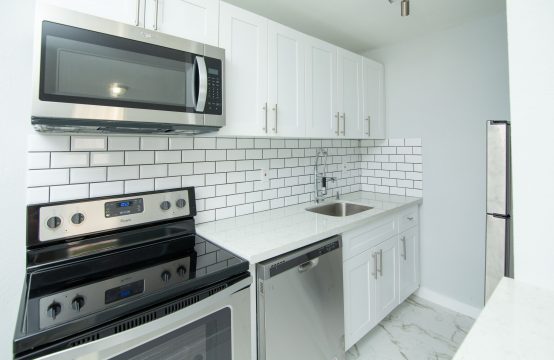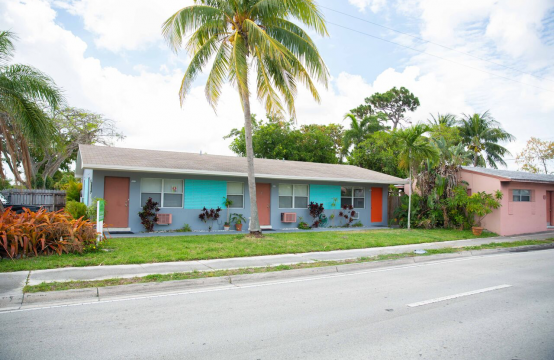2020 was an unpredictable period for the short-term rental market in the US. After bookings plunged in the early part of the year due to the government-mandated lockdowns and travel restrictions, rentals bounced back toward the year’s end as the pandemic situation in several areas stabilized.
What’s clear, however, was these were not your typical bookings, and the pandemic has drastically changed the way people approach travel.
Online marketplace Airbnb conducted a survey of a representative sample of 1,036 American adults to find out how travel changed during the pandemic. It then identified several major trends that could have an impact on vacation rental investment in the US this year. Here are some of them:
1. The shift to remote work has blurred the lines between living and traveling.
More than four-fifths, or 83%, of respondents said they are in favor of relocating as part of remote working. Of these, a quarter believe they will be able to “live where they want to and work remotely.”
The survey also found a remarkable 128% ascent in guest reviews mentioning “relocation”, “relocate”, “remote work,” and “trying a new neighborhood” from July to September 2020 compared to the same period in the year previous year.
“More people working from home means more flexibility around when and where they travel,” wrote Brian Chesky, chief executive officer at Airbnb, in the report. “Because of this, there will be fewer travelers visiting the same destinations at the same time, reducing the masses that give mass travel its name.”
2. People will want to travel closer to home.
Domestic travel will continue to be a key trend in 2021 as uncertainty in international travel persists, according to the report.
Close to a third, or 62%, of those surveyed showed high interest in taking a vacation within driving distance of home.
“Wherever we go in 2021, for most of us, it won’t be far from home,” Chesky wrote. “We will get in cars and travel nearby, dispersing to thousands of smaller cities, towns, and rural communities, making tourism an important part of how local economies recover.”
3. Pod travel will gain popularity.
The potential risk of COVID-19 infection will lead people to travel in a “pod.” This means more families and friends will opt to travel in a group to minimize the risks of socializing with others.
Airbnb’s survey found that more than half of trips searched for this year include three or more people, showing how people are planning to travel together.
“Travel will be viewed as an antidote to isolation and disconnection,” Chesky wrote. “People don’t generally miss landmarks, crowded shuttles, and lines and lobbies packed with tourists. Mass travel is really just a different form of isolation – you are anonymous, herded around with other travelers, never really experiencing the people and culture of a community. What people want from travel now is what they’ve been deprived of – spending meaningful time with their family and friends.”
Is it a good idea to invest in short-term rentals this year?
With the travel industry undergoing a seismic shift, short-term rental analytics firm AirDNA says the answer to this question is “it depends.”
In a blog, Dillon DuBois, director of marketing of AirDNA, explained how many investment portfolios that made sense before the pandemic struck are now struggling to stay afloat, while others are seeing unprecedented booking demand.
“There’s still a major discrepancy between home values and the demand for alternative accommodations,” he wrote. “In other words, it’s not so much a pay-to-play industry – some of the most profitable locations on this year’s list maintain very modest home values. Coupled with record-low mortgage rates, vacation rentals are also now far more accessible for aspiring investors.”
He added that the key takeaway from their 2020 data was that “returns remain strong, but the cards have been shuffled.”
Where are the best places to invest in short-term rentals?
AirDNA’s 2020 analysis predicted the best locations to invest based on an investor score derived from three metrics – rental demand, revenue growth, and investability. The last metric compared the cost of homes using Zillow home value data to the average income of full-time short-term rentals on Airbnb and Vrbo.
Here are the best places to invest in vacation rentals based on AirDNA figures.
Up-and-coming markets
These are what DuBois called “hidden gems”, or off-the-beaten-path spots that have flown under the radar in recent years. These markets currently host between 25 and 100 active properties, but DuBois said these numbers are unlikely to stay that way for long.
1. Castroville, California
Annual revenue potential: $113,934
Revenue growth rating: 98
Rental demand rating: 91
Investability rating: 100
Investor score: 97.2
2. Slade, Kentucky
Annual revenue potential: $39,124
Revenue growth rating: 95
Rental demand rating: 92
Investability rating: 100
Investor score: 96.6
3. Cherry Log, Georgia
Annual revenue potential: $41,399
Revenue growth rating: 100
Rental demand rating: 85
Investability rating: 100
Investor score: 96.2
4. Shenandoah, Virginia
Annual revenue potential: $44,426
Revenue growth rating: 87
Rental demand rating: 94
Investability rating: 100
Investor score: 95.2
5. Athens, New York
Annual revenue potential: $44,426
Revenue growth rating: 100
Rental demand rating: 74
Investability rating: 100
Investor score: 93.4
6. Apollo Beach, Florida
Annual revenue potential: $48,101
Revenue growth rating: 89
Rental demand rating: 84
Investability rating: 100
Investor score: 93.3
7. Stanton, Kentucky
Annual revenue potential: $34,231
Revenue growth rating: 98
Rental demand rating: 75
Investability rating: 100
Investor score: 93.2
8. Kerhonkson, New York
Annual revenue potential: $41,160
Revenue growth rating: 91
Rental demand rating: 78
Investability rating: 100
Investor score: 92.3
9. Two Harbors, Minnesota
Annual revenue potential: $32,355
Revenue growth rating: 93
Rental demand rating: 86
Investability rating: 94
Investor score: 91.9
10. Gerton, North Carolina
Annual revenue potential: $51,858
Revenue growth rating: 100
Rental demand rating: 67
Investability rating: 100
Investor score: 91.8
Mid-sized markets
These cities are more accessible and commonplace than the up-and-coming spots, but not as competitive as top-tier destinations, according to DuBois. These markets have between 100 and 1,000 active vacation rental listings.
1. Yucca Valley, California
Annual revenue potential: $45,691
Revenue growth rating: 100
Rental demand rating: 92
Investability rating: 98
Investor score: 96.9
2. Ridgedale, Missouri
Annual revenue potential: $52,324
Revenue growth rating: 100
Rental demand rating: 82
Investability rating: 100
Investor score: 95.5
3. Fairplay, Colorado
Annual revenue potential: $44,152
Revenue growth rating: 86
Rental demand rating: 89
Investability rating: 99
Investor score: 93.2
4. Orderville, Utah
Annual revenue potential: $59,992
Revenue growth rating: 92
Rental demand rating: 79
Investability rating: 100
Investor score: 92.9
5. Luray, Virginia
Annual revenue potential: $40,497
Revenue growth rating: 96
Rental demand rating: 71
Investability rating: 100
Investor score: 91.7
6. Morganton, Georgia
Annual revenue potential: $45,054
Revenue growth rating: 100
Rental demand rating: 66
Investability rating: 100
Investor score: 91.6
7. Satellite Beach, Florida
Annual revenue potential: $42,000
Revenue growth rating: 99
Rental demand rating: 66
Investability rating: 100
Investor score: 91.3
8. Kingston, New York
Annual revenue potential: $32,743
Revenue growth rating: 86
Rental demand rating: 82
Investability rating: 99
Investor score: 91.3
9. Joshua Tree, California
Annual revenue potential: $40,485
Revenue growth rating: 100
Rental demand rating: 89
Investability rating: 86
Investor score: 90.0
10. Mineral Bluff, Georgia
Annual revenue potential: $43,427
Revenue growth rating: 100
Rental demand rating: 59
Investability rating: 100
Investor score: 89.7
Large markets
DuBois said these cities have been on the vacation rental investment radar for quite some time and host more than 1,000 active vacation rentals.
1. Palm Springs, California
Annual revenue potential: $64,571
Revenue growth rating: 99
Rental demand rating: 60
Investability rating: 100
Investor score: 89.7
2. La Quinta, California
Annual revenue potential: $77,936
Revenue growth rating: 99
Rental demand rating: 52
Investability rating: 93
Investor score: 84.1
3. Sevierville, Tennessee
Annual revenue potential: $61,961
Revenue growth rating: 65
Rental demand rating: 71
Investability rating: 100
Investor score: 83.9
4. South Lake Tahoe, California
Annual revenue potential: $62,187
Revenue growth rating: 91
Rental demand rating: 47
Investability rating: 95
Investor score: 81.9
5. Gatlinburg, Tennessee
Annual revenue potential: $55,439
Revenue growth rating: 56
Rental demand rating: 70
Investability rating: 100
Investor score: 81.6
6. Pigeon Forge, Tennessee
Annual revenue potential: $51,857
Revenue growth rating: 70
Rental demand rating: 42
Investability rating: 99
Investor score: 77.1
7. Saint Augustine, Florida
Annual revenue potential: $47,371
Revenue growth rating: 68
Rental demand rating: 62
Investability rating: 82
Investor score: 73.4
8. Gulf Shores, Alabama
Annual revenue potential: $99,095
Revenue growth rating: 74
Rental demand rating: 19
Investability rating: 100
Investor score: 73.2
9. Bradenton Beach, Florida
Annual revenue potential: $60,051
Revenue growth rating: 48
Rental demand rating: 43
Investability rating: 100
Investor score: 72.9
10. Panama City Beach, Florida
Annual revenue potential: $59,986
Revenue growth rating: 55
Rental demand rating: 36
Investability rating: 100
Investor score: 72.2



